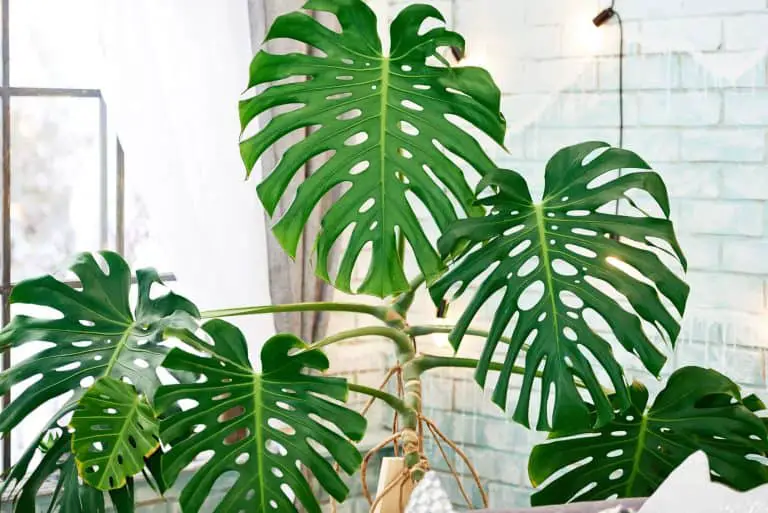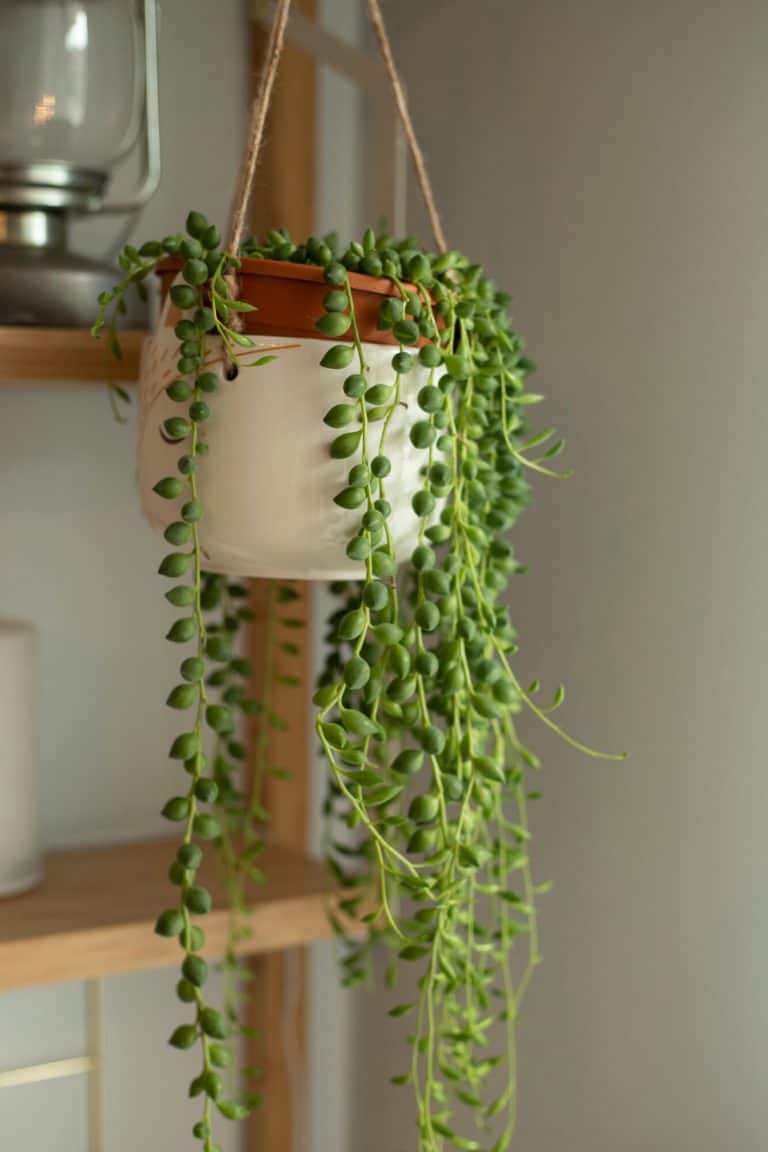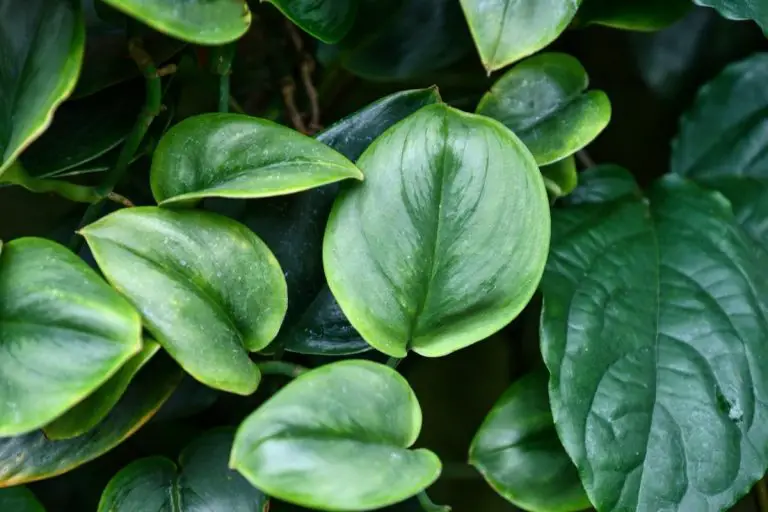Philodendron Giganteum- How To Help Them THRIVE!
If you are a fan of large leafy indoor tropical plants, the Philodendron Giganteum will probably be your favourite. Considered to be the most popular large leaf philodendron plant, it’s readily available at nurseries worldwide and is perfect if you’re looking to add that lush tropical feel to any room.
DISCLAIMER
Some of the links on here are affiliate links and I may earn if you click on them, AT NO EXTRA cost to you. Hope you find the information here useful! Thanks.
Related Articles:
- Scindapsus Moonlight – Essential Tips You Need to Know
- Philodendron Florida Ghost – The Most Comprehensive Guide
- Essential Guide To Philodendron Melanochrysum Care
- A Practical Care Guide to Crassula Hottentot
- The Best Practices to Care for Philodendron Birkin
Type of Plant
Philodendron is a large genus of plants from the family Araceae or commonly known as Aroids. Other popular members of the Aroid family are Montseras, Pothos, and Anthuriums.
Here is an interesting fact
- Philodendra is the recognized plural form, but Philodendrons is fine, and don’t let anyone tell you otherwise!
While many of its species are still undescribed and poorly known, most are grown as indoor, ornamental plants. If you love these plants, then it’s certainly in the name. Philodendron derives from the Greek words Philo.– or ‘love,’ ‘affection,’ and dendron o, ‘tree.’
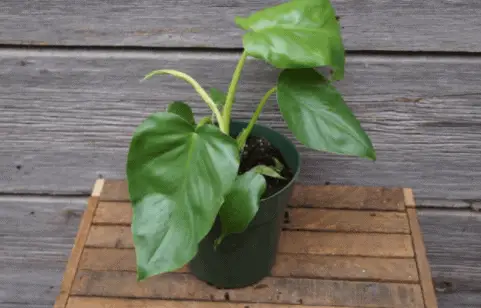
They are indigenous to the Caribbean islands and certainly have a tendency to make you feel like you’re away on holiday there!
The maximum leaf size for Philodendron Giganteum from scientific information available is 190cm x 96cm (76 x 38 inches), and it’s expected to be the largest big leaf philodendron.
Its less popular cousins, like Philodendron maximum from Ecuador, have leaves that reach the size of 165cm (5.5 feet), and Philodendron gigas from Panama can grow to 125cm (4.1 feet) in length.
Features
Philodendron Giganteum or sometimes called the giant Philodendron has rich green heart-shaped leaves, which are whole and not pinnated (leaves on both sides of the stem).
There is a pronounced, lighter-toned midrib with veins extending to the edges on the underside of the large, green leaves. This offers a hint of variegation that makes it more attractive and sought after in today’s market.
The rare variegated version of this species, Philodendron Giganteum Variegata, is a horizontal climber with beautiful chimeric variegation. It costs about three times more than its unicolored cousin. Some call it the philodendron giganteum blizzard.
The philodendron giganteum blizzard care is more or less the same as its cousin, the giant philodendron.
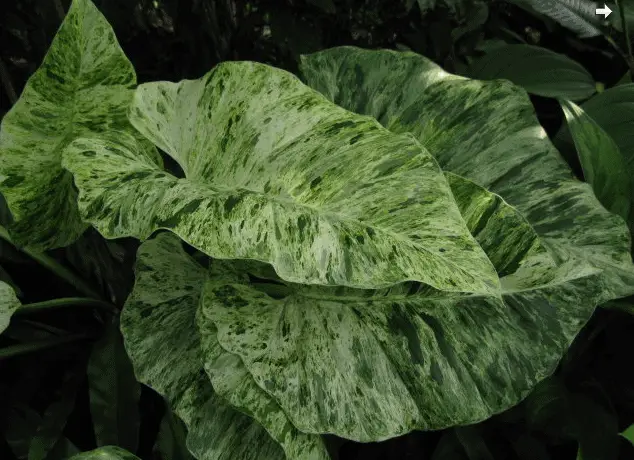
Here is an interesting fact.
- A pinnate leaf resembles a feather, having leaflets on each side of a common axis
- Variegation means multicolored, especially as irregular patches or streaks
- Chimeric variegation refers to a plant consisting of two genetically distinct types of cells, yielding random areas of coloration on an otherwise green plant.
I think the Philo giganteum variegated version or more accurately, the ‘philodendron giganteum variegata’ is one of my favourites! They look so unique. 🙂 I also prefer it because although more beautiful, the philodendron giganteum variegated care is more or less the same!

The philodendron gigantium fall into two basic categories:
- vining (philodendron giganteum climbing) and
- non-trailing (also called self–heading).
Philodendron Giganteum is a self-heading plant, and they are characterized by having large, rigid stems that can hold the plant upright.
How To Care For Philodendron
The gigantium plant has many needs which include
- Potting
- Soil conditions
- Lighting conditions
- Water conditions
- Fertiliser needs
- Propagation
- Pest and so much more!
Potting Needs for Philodendron Giganteum
As the name suggests, this gigantic plant requires a lot of room to manoeuvre.
It’s what you consider a ‘filler’ rather than a delicate ‘accent’ plant or a centrepiece. Its large green leaves work beautifully to fill the empty corners of any room or outdoor space.
Having said that, if you plan to plant your philodendron indoors, be sure to use a large, sturdy pot for this giant to grow. Raise the pot using bricks or a stand to allow for optimum draining.
As a self-header, you can grow Philodendron gigantum in a pot or directly into the ground.
I like this elegant pot with drainage holes, a ceramic tray, a drainage mesh net and Protective Scratch Pad included!

Many grow the plant in a pot initially and transfer it to the ground later.
When the roots outgrow the pot, you’ll see them creeping out of the drain holes. You might then want to consider repotting them.
When repotting, remove the entire plant along with the root ball and move it to a larger pot. For a larger philodendron Giganteum, repotting may be required once every two to three years, and be sure to only do it during the growing months of spring and summer to help with its recovery after the event.
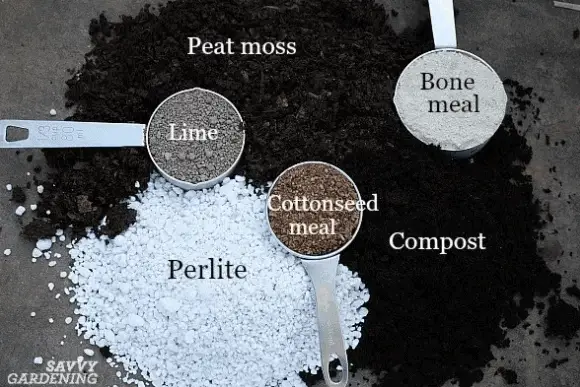
Soil Conditions for Philodendron Giganteum
The key to knowing how to plant a philodendron is using and maintaining the correct type of soil.
Interestingly, this big leaf philodendron is known to be both terrestrial (grows in the earth) and epipetric (capable of growing on rocks). This clearly shows that it doesn’t do well in soil with excess water.
Ideally, use rich, loose potting soil that will drain well and is high in organic matter and sphagnum peat moss.
We recommend this organic potting mix by the brand Espoma.
Cactus or succulent mix is a good base, and you might add perlite and peat moss to it. Be sure to add some kind of organic matter, be it coconut husk, bark, or even bits of brick, as the roots love to wrap themselves around them.
Philodendron Giganteum care becomes a lot easier if you plant them outdoors, directly into the ground. Find a spot with quick-draining soil rich in organic matter. Leaf mulch and sterile compost help the soil retain moisture while keeping it well-drained at the same time.
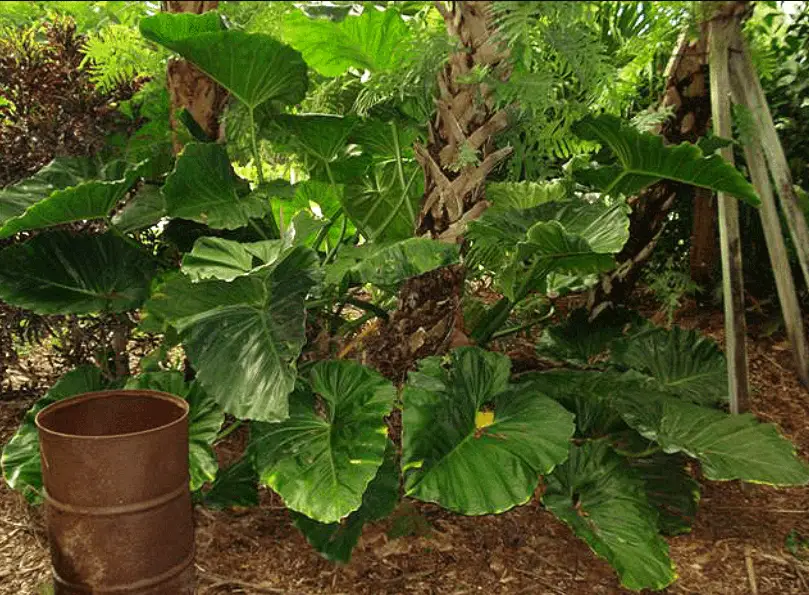
Lighting Conditions for Philodendron Giganteum
This large leaf philodendron requires up to 70-85% sunlight. As it has huge green leaves, it’s rather obvious it requires lots of sunlight for photosynthesis.
The leaves are rich green which means they need plenty of light to produce all that chlorophyll. They are large and expansive, which shows how these low-lying plants have adapted to the lack of direct sunlight being under the canopy of large tropical trees in the rainforest.
Here is an interesting fact.
- Photosynthesis, the process by which green plants and certain other organisms transform light energy into chemical energy. Light energy is captured and used to convert water, carbon dioxide, and minerals into oxygen and energy-rich organic compounds.
- Chlorophyll is a green pigment found in plants. Plants use chlorophyll and light to make food.
If you want to grow Philodendron Giganteum indoors, it can tolerate shade but will lose some of its colour in the leaves, and its growth will be slower. They grow much better in semi-bright filtered light.
They don’t do well in direct sunlight as the sun burns the foliage.
If you live in cold areas, it is best to grow Philodendron Giganteum indoors in a pot, under fluorescent lights in the winter months.
I use these for my indoor plants which are a bit pricey but my plants LOVE THEM and thrive under them! My living room feels like a lush jungle 🙂

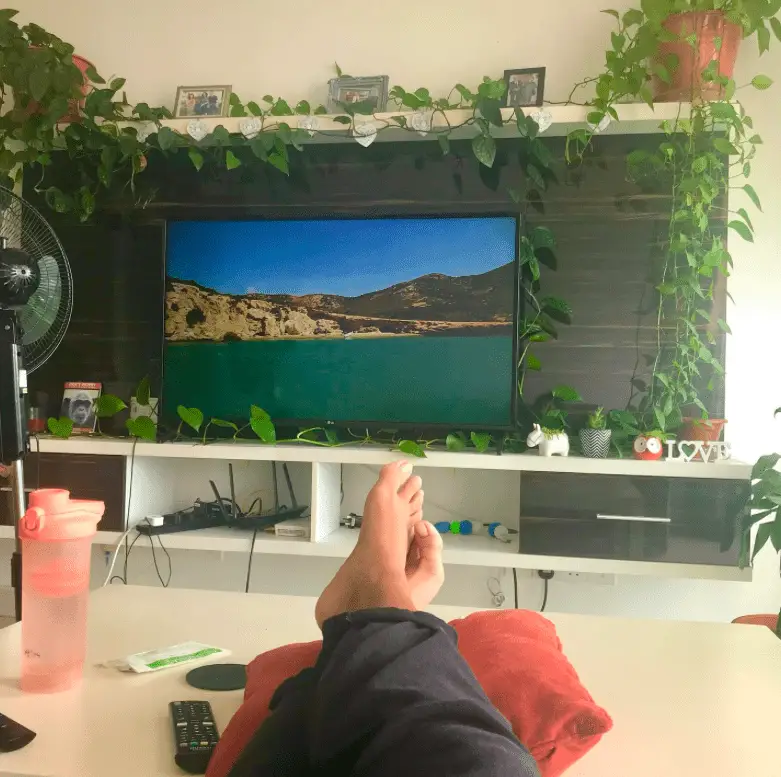
Watering Schedule for Philodendron Giganteum
It’s neither straightforward nor easy to establish a regular watering schedule for these types of tropical plants. Watering demands vary from the location of your plant and its size to the kind of climate where you live.
It’s imperative to look out for these signs:
- if your philodendron’s large leaves turn brown and start drooping, you are under-watering it.
- If they turn pale, yellow, and fall off, you’re likely over-watering.
Over-watering will lead to root rot which is the single most dangerous thing to happen to your plant.
Always allow the topsoil to dry out before watering again.
Check the topsoil and only water it if half or 1/3 of it is dry. If you find this tedious, get yourself a soil moisture measuring device. It’s fairly cheap and is easily available on Amazon and most online gardening tool sites.
You might even find some Philodendron Giganteum for sale while you’re there.
This particular device measures pH and light as well. The ideal level of topsoil moisture, as shown on this device, is ‘3’. Adjust your watering schedule accordingly based on this.
Do bear in mind that you should water your philodendron less during the fall and winter.
On average, but not as a general rule, a potted Philodendron Giganteum should be watered about twice a week in the growing months of spring and summer and probably once a week during the fall and winter months,
If you live in the tropics and grow your Philodendron Giganteum outdoors in the ground with direct sunlight all year round, you can water it every other day when it isn’t raining.
Temperature and Humidity for Philodendron Giganteum
The best temperature range for your Philodendron Giganteum is between 55–800F
(13-270C). Ideally, it grows well if kept at room temperature, and be sure not to let it fall below 550C (130C) in the winter,
As with all tropical plants, a humid environment is essential.
Keep humidity above 60% for ideal growth and general health of your plant. If you live in an area with low humidity, mist your philodendron with a humidifier a few times a week.
Give the leathery leaves a sponge bath from time to time to make them look fresh and glossy.
You might want to consider getting yourself a 2 in 1 Hygrothermometer making sure optimal growing conditions for your plant.

Fertilizing Philodendron Giganteum
As Philodendron Giganteums are known to grow rather slowly if left unfertilized, it’s best to have a fertilization regime in place as soon as you bring the plant home.
When planting it in a pot, fertilize twice a month initially with a balanced organic fertilizer as they are slow-release and generally safe to use. If you intend to use chemical fertilizers, use a balanced (NPK 20-20-20) liquid foliage-booster kind.
This organic fertilizer is made with 100% natural & organic ingredients with no fillers or sludges.
Liquid chemical fertilizers allow you to dilute it and therefore reduce its concentration.
The heavy salts in cheaper fertilizers will damage the roots. Excessive fertilization leads to the curling of the leaf tips and could even possibly kill the plant.
Here is an interesting fact.
- The NPK values on any bag or bottle of fertilizer represent the percentage of the three most important nutrients for plants, i.e., Nitrogen (N), Phosphorus (P), and Potassium (K).
- A balanced NPK 20-20-20 fertilizer would contain 20% Nitrogen, 20% Phosphorus, and 20% Potassium, ideal for most indoor houseplants.
Nitrogen promotes healthy leaf growth by stimulating the production of chlorophyll. Phosphorus supports the development of roots, stems, blossoms, and fruits, while potassium plays a key role in helping plants digest and manufacture their food.
Always remember to feed (fertilize) your plants only during the growing months of spring and summer. All feeding must cease completely in winter, and all you need to do is water it lightly and mist it occasionally.
If you plant it outdoors in a soil mix rich in organic manure, it wouldn’t need additional fertilizing for a while. The plant responds well to regular feeding with decomposed leaf or mulch, and bark matter works perfectly as organic food for your plant.
Propagation of Philodendron Giganteum
Unfortunately, self-headers like the Philodendron Giganteum are not the easiest plants to propagate. Climbing philodendrons are much easier as their stem cuttings root well in water and are therefore easily propagated.
If you do intend to attempt Philodendron giganteum propagation, here are some handy tips.
- Always propagate and repot in the growing months of spring & summer.
- You’ll need a fast-draining base. Coconut husks and coconut fiber work well as the base of the pot before you fill it will soil.
- Sterilize your knife with hydrogen peroxide (H2O2) to avoid infections on your plantlets.
- Locate the aerial roots and be careful to cut below them.
- Check out this video from Sayong’s Garden for the best tips and techniques on how to propagate Philodendron Giganteum.
Care Guide for Philodendron Giganteum
The basis of how to grow Philodendron Giganteum and care for it simply involves simulating its natural habitat, which includes plenty of warmth, bright light, and moisture.
Rotate your potted Philodendron monthly to promote even growth.
Compared to other houseplants, the Philodendron Giganteum doesn’t require regular pruning. Trim off any discoloured leaves, stems, and dead aerial roots with a sharp pair of sterilized garden scissors for a clean look.
Tackling Pests and Diseases in Philodendron Giganteum
Plant diseases are rarely a problem for indoor house plants.
Philodendra, in general, are not prone to insects, but you may occasionally encounter aphids, spider mites, and mealybugs. You can wipe off mealybugs with cotton balls dipped in rubbing alcohol.
Periodically showering your plant with water and insecticidal soap help keep pests away. Be sure to wipe them dry after. Applying neem oil after drying works just as well.
Leaf spot disease is caused by bacteria or fungi and looks like brown spots, with yellow halos directly around them.
They can also manifest as dark spots with black edges. These spots can occur anywhere on the leaf, and as the lesions grow larger, the leaf will get thinner and more brittle. They will easily break off if you touch them.
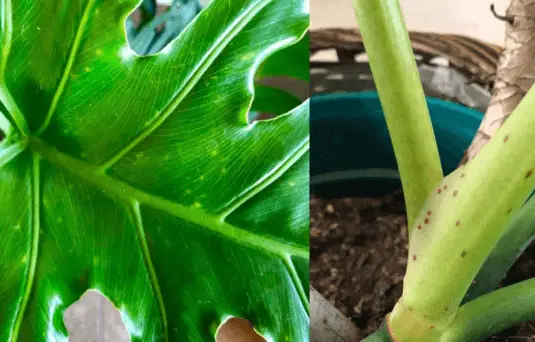
These spots are highly contagious and spread rapidly to nearby leaves and even neighbouring plants. Isolate a sick plant at the first sign of disease.
If you notice more than a third of its leaves showing symptoms, remove them a few at a time, cleaning your pruning tool between cuts in a solution of one part household bleach to nine parts water.
Stop spritzing your plant immediately as this excess surface water is the primary source of the bacteria that causes this disease.
The added moisture will only help the bacteria grow. Apply a suitable fungicide to both sides of the leaves and even on its stems. The fungicide won’t cure leaf spot disease but will prevent its spread.
Keep your sick plant in a cool and dry area with proper light, water and fertilizer. This may restore its health, but if the infection is systemic, there isn’t much you can do to prevent the inevitable.
Problems You Might Face When Growing Philodendron Giganteum
- Root rot – do not overwater your plants. Keep marbles or rocks in the tray below your pot to keep the roots elevated from stagnant pooling in the tray.
- Leaf-tip curling – is likely due to excessive feeding (fertilizing).
- Root crowding – consider repotting to allow your plant’s roots more room to grow.
Famous Family Members of Philodendron Giganteum
Philodendron squamiferum is one of the most beautiful aroids. It is a climber characterized by its unusually long, red stems covered with soft, fuzzy red hairs (or botanically called pubescence!). It has pretty oak-shaped leaves with multiple lobes and is easy to care for.

Philodendron erubescens or better known as Pink Princess is a rare species from deep in the Amazon. It’s a climbing Aroid with dark green leaves and contrasting light pink (almost pink panther-Esque) variegated blotches.
Don’t be fooled into getting a philodendron with fully pink leaves. These are actually called Philodendron Pink Congo but might be passed off as Pink Princesses. These plants are injected with chemicals to turn the leaves pink temporarily, and they eventually revert to green after several months.
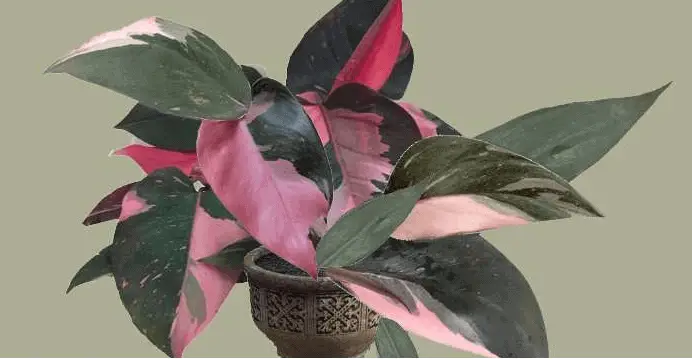
Philodendron hederaceum, also known as the heartleaf Philodendron, is probably the most popular of all giganteum plant varieties. It is a vining Aroid endemic to Central and South America. Its bright and pretty leaves add an instant tropical vibe to any room.

FAQs
Do Philodendrons Need Sunlight?
Philodendrons grow best in medium light and bright indirect sunlight. Direct sunlight will burn its leaves. They tolerate low light, but if the stems become leggy with several inches between the leaves, it’s a sign it needs more light.
How Often Do You Water It?
There is no right answer to this question.
As mentioned in detail above, many factors are involved, including the climate, the size of your plant, and whether it’s a potted indoor or an outdoor plant.
On average, but not as a general rule, a potted Philodendron Giganteum should be watered about twice a week in the growing months of spring and summer and probably once a week during the fall and winter months.
Still, it’s best to play it by ear by assessing the moisture levels of the topsoil using a moisture-measuring device.
Save a few bucks and buy this soil tester!
Is It Toxic To Pets?
All parts of Philo giganteum are toxic if ingested.
They contain calcium oxalate crystals that cause burning and irritation of the mouth, lips, and tongue.
If consumed in large amounts, it can cause excessive salivation, vomiting, and difficulty swallowing. It’s best to keep them away from pets or young children with a tendency to eat plants.
Can Philodendron Take Full Sun?
Yes, they can, but it isn’t recommended.
Their natural habitat in the rainforest is below the canopy of large trees, so they thrive in filtered light with lots of moisture and shade. Direct sunlight, especially with low humidity, will lead to scorching of the leaves.
How Do You Get Big Philodendron Leaves?
Use a nitrogen-rich organic fertilizer once a month during the growing months.
Wipe down the leaves with neem oil to prevent bugs and water the plant adequately. Make sure it gets enough light during the winter months.
Do Philodendrons Like Coffee Grounds?
Coffee grounds are a rich source of nutrition for your philodendrons, but they must be used in moderation.
It’s a good home remedy for perking up your sleeping giant, especially in the growing months. Mix the grounds into your potting soil, and your plants will thank you for the treat.
How Do You Recognize A Philodendron?
Some of the shared traits of Philodendrons include the large leaves, long aerial roots, and parallel leaf veins, but that’s pretty much it.
The other physical characteristics of Philodendrons vary across the different species in the group, depending on their environment and even the level of maturity of the plant.
Besides the green leaves, you will also find species with pink, red, purple, or orange leaves with varying shapes, sizes, and textures.
If you want to establish whether a plant is a philodendron or not, use some of the best plant identification apps you can find on the market, like PlantNet, which is available for free at the Appstore and on Google Play.
Scientists have had problems identifying Philodendrons for years as they take on different shapes and features at different stages of their life. So, don’t beat yourself up.
Why Are Variegated Plants So Expensive?
Philodendron Giganteum variegated plants have less green in them and, therefore, less surface area to photosynthesize and produce the energy required for growth and repair.
So, compared to fully green plants, they require a lot more light and typically grow a lot slower. Add this to the fact that they’re much harder to come by, and that’s basically why they are currently so sought after and pricey.
Conclusion
If you’ve come this far, you must really love large leafy tropical plants like Philodendron Giganteum. Their lush foliage adds loads of colour and character to any room.
They do a whole lot better when planted into the ground, and you get to patiently witness their tiny leaflets unfurl into large elephant-ear-sized giants.
All the time you put in and the perseverance with its care will all be worth it when it morphs into the pride and joy of your entire collection. All the best on your journey!







![Why Is My Orchid Wilting? [And How To Fix It!]](https://aboveandbeyondgardening.com/wp-content/uploads/2021/10/Why-Is-My-Orchid-Wilting--768x512.jpg)

